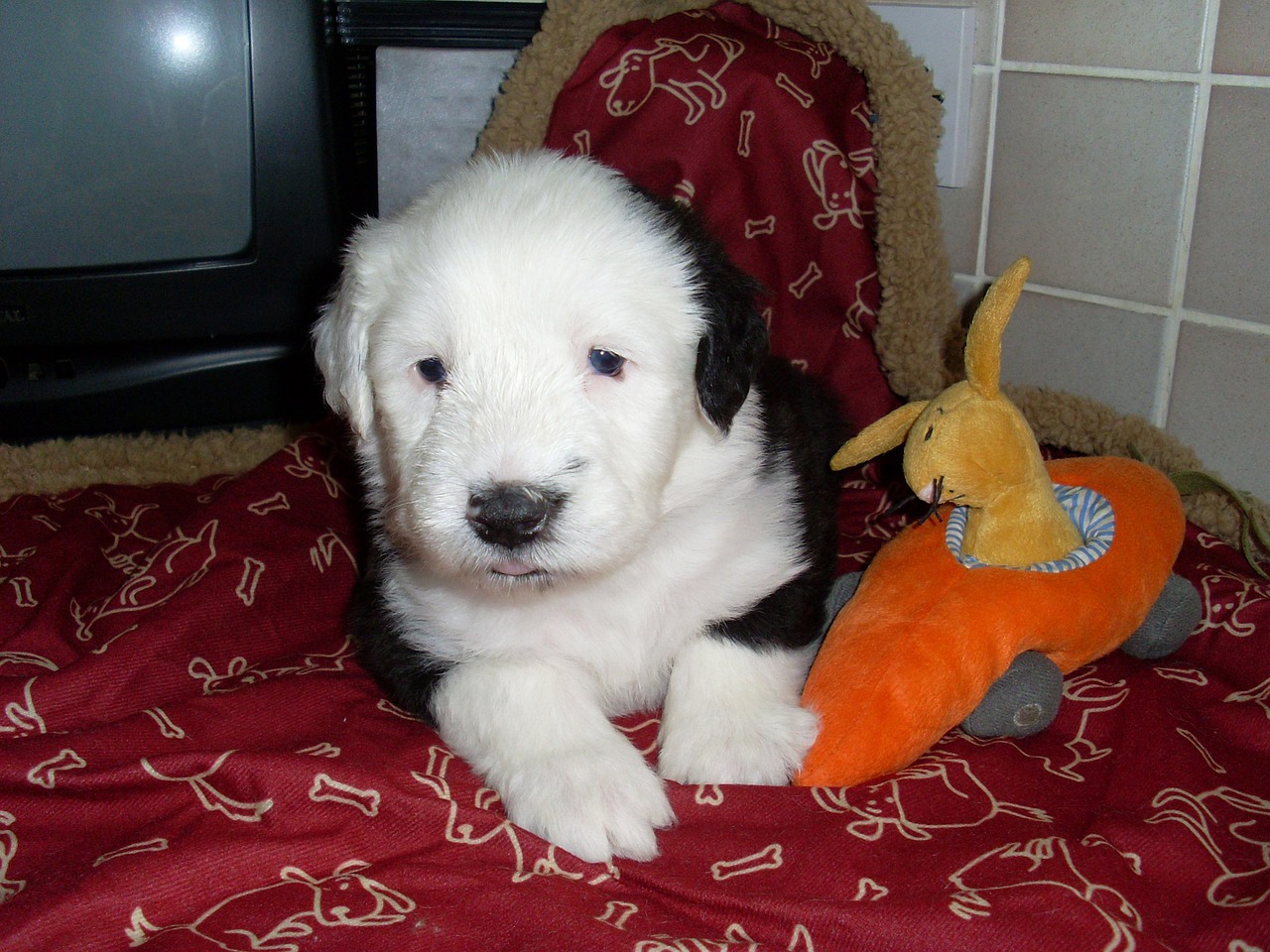
Old English Sheepdogs are a large, distinctively shaggy breed, known for their charmingly playful nature and loyal companionship. However, like many purebred dogs, they are prone to certain health issues. Being aware of these potential health problems and the signs to look out for can help pet owners ensure their fluffy friends live a happy, healthy life.
-
Hip Dysplasia
A common issue in many large breed dogs, hip dysplasia is one of the primary health concerns for Old English Sheepdogs. This is a condition where the ball and socket joint of the hip does not fit together correctly, leading to painful arthritis and, in severe cases, lameness.
Signs of hip dysplasia can include a noticeable change in gait, such as a bunny-hopping motion when running, difficulty getting up from a lying position, or reluctance to climb stairs or jump. Your dog may also show signs of discomfort or pain, especially after exercise.
-
Progressive Retinal Atrophy (PRA)
PRA is an inherited eye disorder that gradually leads to blindness. It affects the retina, where the initial degeneration of rod cells leads to night blindness, eventually followed by daytime vision loss.
Warning signs of PRA are difficult to spot in the initial stages. Owners should watch out for increased difficulty in navigating in dim light or during the night, noticeable clumsiness, and a distinct shine or glow in the dog’s eyes due to increased reflection of light from the retina. Regular eye check-ups can help diagnose and manage the condition early.
-
Hypothyroidism
This condition, caused by an underactive thyroid gland, is also relatively common in Old English Sheepdogs. Hypothyroidism can lead to a variety of health problems, including obesity, lethargy, mental dullness, and skin conditions like infections and hair loss.
Symptoms to look out for include weight gain without an increase in appetite, fatigue, hair loss, frequent ear infections, and a dull coat. A diagnosis of hypothyroidism requires a vet’s evaluation, who might prescribe lifelong medication to manage the condition.
-
Hereditary Deafness
Some Old English Sheepdogs suffer from hereditary deafness, a condition that can affect one or both ears. It’s often caused by the degeneration of nerve tissue within the ear, leading to partial or complete loss of hearing.
Signs of deafness can be subtle, especially if only one ear is affected. Watch for changes in behavior like not responding to their name or commands, being startled easily, or excessive barking. If you suspect your pet might be losing their hearing, consult your vet for a formal hearing test.
-
Gastric Dilatation Volvulus (GDV)
Also known as bloat, GDV is a life-threatening condition in large, deep-chested breeds like Old English Sheepdogs. It happens when the dog’s stomach fills with gas and possibly rotates, trapping gas and food inside. This causes the stomach to expand, putting pressure on other organs and potentially cutting off the blood supply.
The early signs of bloat can include excessive drooling, swollen abdomen, restlessness, pacing, attempts to vomit without bringing anything up, and signs of discomfort. This condition is an emergency that requires immediate veterinary attention.
Conclusion
Being aware of these common health issues in Old English Sheepdogs and knowing the signs can make a world of difference in early detection and treatment. Regular vet check-ups and a balanced diet with proper exercise can go a long way in ensuring your shaggy companion lives a long, healthy life. It’s always important to consult your vet if you notice any changes in your dog’s behavior, appetite, or physical condition, as they are the best resource for diagnosing and treating your pet’s health concerns.
NEXT UP: Since the pandemic, veterinarian bills have skyrocketed. This website lets you compare prices on all the pet insurance companies at once.
The post Know the Signs: 5 Most Common Health Issues in Old English Sheepdogs appeared first on iHeartDogs.com.
via Whisker Therapy